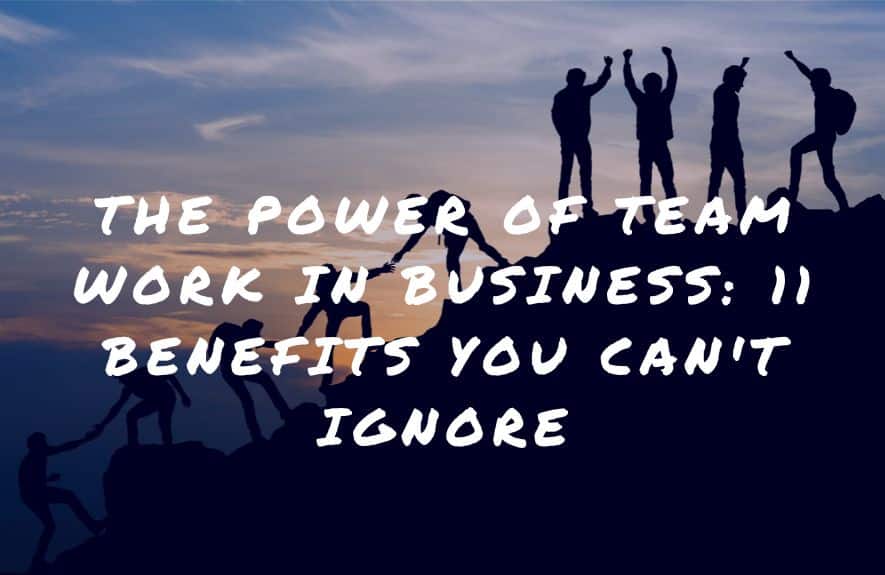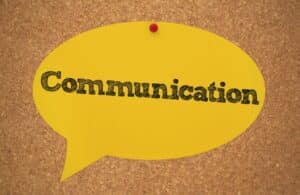What Is Team Work?
Team work is the magic that happens when individuals unite their talents, brainpower, and energy toward a common goal. It’s not just a buzzword. It’s a driving force behind productivity, innovation, and job satisfaction in modern businesses. Team work is about collaboration, communication, trust, and mutual respect.
When teams function effectively, tasks get completed faster, problems are solved more creatively, and employees are far more engaged. In short: team work is the engine that keeps the workplace running smoothly.
Why Is Team Work Important in Business?
Business team work is the backbone of a successful organisation. From startups to FTSE 500 giants, no company can thrive without collaboration. Great ideas are rarely the work of a lone genius. They usually come from group discussions, feedback loops, and shared experiences.
A team-oriented culture can:
- Improve efficiency
- Enhance communication
- Boost morale
- Increase innovation
- Reduce burnout
Now, let’s dive into 11 key benefits of team work in the workplace, with real-life team work examples to bring each one to life.
1. Team Work and Communication Go Hand-in-Hand
Good communication is the bedrock of great team work. When people share ideas openly, listen actively, and offer constructive feedback, things just click. Teams that communicate well are more aligned on goals and less likely to encounter misunderstandings or duplicated efforts. This kind of open dialogue also builds transparency, ensuring every team member understands their role and how it contributes to the bigger picture. Whether it’s through daily stand-ups, instant messaging tools, or regular check-ins, strong communication practices are key to team success.
Team work example:
During a high-pressure product launch, Daniella noticed a technical bug that could have caused a major disruption. Instead of trying to fix it alone or wasting time escalating it through multiple channels, she quickly messaged her teammate Kabir on their team platform. Kabir, who had dealt with a similar issue in the past, jumped on a call with her. Within 15 minutes, they’d identified the root of the problem, implemented a fix, and tested the solution. Thanks to their quick communication and teamwork, the launch went ahead smoothly, and they even received a shoutout from their manager for staying calm under pressure.
Tip: Try team building activities that focus on listening and collaboration to strengthen communication skills.
2. Team Work Improves Brainstorming Sessions
Ever felt stuck for ideas? Team work is the answer. Collaborative brainstorming harnesses multiple perspectives to tackle challenges creatively. Instead of relying on a single person to solve complex problems, teams can generate a wider variety of solutions by bouncing ideas off one another. This diversity of thought fuels innovation and ensures that more angles are considered before settling on the best approach. Brainstorming as a team also builds confidence, encouraging quieter voices to contribute and feel heard.
Team work example:
Kat, a UX designer, was asked to come up with a fresh design for the company’s new homepage. She had some ideas but felt they were too safe and lacked the wow factor. She decided to call a team brainstorming session with the product, marketing, and development teams. Over the course of an hour, they bounced ideas around, shared feedback, and even built on each other’s concepts. One idea that started as a joke ended up sparking a brilliant feature the company ended up launching. The session not only resulted in a winning design but also helped the team feel more connected and creatively energised.
3. A Shared Goal Fuels Productivity
Nothing unites a team like a clear, shared objective. With everyone pulling in the same direction, there’s less confusion and more cohesion. Shared goals provide focus and clarity, helping each team member understand what success looks like and how to contribute toward it. Having a common purpose also reduces friction—when everyone knows the endgame, decision-making becomes more straightforward and prioritisation becomes easier. It’s the glue that turns individual effort into collective impact.
Team work example:
Kabir’s team was transitioning to a new scheduling tool designed to save time and reduce human error. Initially, the team was resistant—another new platform to learn! But once the project lead clearly articulated the end goal (automation of repetitive tasks and more time for strategic work), the mood shifted. Everyone understood the long-term benefits and began supporting one another through the transition. They set mini-goals, shared tips, and even ran weekly Q&A sessions. Within a few weeks, the tool was fully adopted, and productivity metrics noticeably improved.
Tip: Use visual timelines or digital tools to keep everyone aligned.
4. Team Work Supercharges Problem Solving
When a problem arises, tackling it as a team brings faster and more effective solutions. Different team members bring different experiences, insights, and skills to the table, allowing the group to explore a broader range of solutions. Collaborative problem-solving also creates accountability and encourages more thoughtful analysis, since multiple people weigh in before a decision is made. Plus, it’s simply less stressful when the burden is shared, allowing creative thinking to flourish.
Team work example:
Midway through a marketing campaign, the team discovered that the main image they had licensed for the hero banner was now unavailable due to legal complications. Panic set in briefly, but instead of letting one person carry the weight, the entire campaign team gathered for a problem-solving sprint. The designers suggested quick visual alternatives, the copywriters adapted the headline to match, and the legal team found a new image provider that met compliance. What could have taken days of back-and-forth was resolved within an afternoon, thanks to collective problem-solving.
5. Team Work Builds Trust
Trust takes time, but it’s the invisible glue that holds teams together. With trust, colleagues support each other, admit mistakes, and collaborate freely. Trust allows team members to be vulnerable without fear of judgement, which is crucial for innovation and open feedback. When people know they can count on each other, they’re more likely to go the extra mile and take creative risks. Trust also reduces micromanagement and empowers employees to take ownership of their work.
Team work example:
Ray, a junior developer, had fallen behind on a key module due to personal challenges. Instead of reprimanding him, his team leader Kabir invited him for a one-on-one catch-up. Kabir offered guidance, helped break the work into smaller, manageable tasks, and even reassigned a few elements to others to ease the load. Ray felt supported and encouraged rather than ashamed. Within the next week, he not only caught up but also proposed a smart feature that impressed the entire department. That moment of support built lasting trust.
Tip: Weekly one-to-one check-ins are a simple way to build trust.
6. Team Work Strengthens Company Culture
Company culture isn’t just about perks and pizza. It’s about fostering respect, inclusion, and shared values. Team work is a powerful culture builder. A strong team culture fosters belonging and boosts employee retention, making your workplace one people actually want to be part of. When team work is a core part of company culture, it creates a supportive environment where collaboration becomes second nature, not a forced exercise.
Team work example:
Every Monday, Kabir’s team kicks off the week with a 30-minute meeting called “Mugs & Monday,” where everyone brings their favourite drink and shares highlights from their weekend before discussing the week ahead. This ritual evolved organically and became a beloved part of the team’s routine. It created space for both laughter and planning, strengthening relationships and contributing to a culture where people felt connected beyond tasks and deadlines.
7. Team Work Increases Efficiency
Efficiency isn’t about working harder—it’s about working together. Teams that trust one another and communicate well finish projects faster and smarter. They waste less time on duplicating tasks, avoid bottlenecks, and can distribute workload evenly. Well-coordinated teams also make better use of resources and are more likely to hit deadlines, all while maintaining high standards of quality.
Team work example:
When Ray’s team was handed a complex client pitch on short notice, his initial instinct was to delegate it solely to Kat, the team’s strongest presenter. But after a quick chat, they realised a divide-and-conquer approach would be more efficient. Kat handled the visuals, Ray did the research, and a third teammate compiled the stats. They shared their progress via a shared dashboard and synced up each morning. They delivered a polished proposal in half the projected time, earning client praise and boosting team confidence.
8. Team Work Boosts Employee Engagement
Engaged employees care more, stay longer, and bring their A-game. When people feel part of a cohesive team, motivation skyrockets. Team work fosters a sense of community and shared purpose, both of which are essential for emotional well-being. When employees feel seen, heard, and valued by their team, they’re more likely to take pride in their work and invest in long-term success.
Team work example:
Kat’s department had hit a stressful period with a looming product deadline. To prevent burnout, she organised a surprise “creative break”—a fun 45-minute team building activity where everyone shared their most ridiculous invention ideas using props from their desks. The laughter and bonding reset the team’s energy, and when they returned to their tasks, they were more focused and productive. The spontaneous fun reminded everyone they were part of a supportive and human-centred workplace.
Tip: Kickstart meetings with a quick game or fun prompt to boost engagement.
9. Team Work Fuels High Performance
Team accountability drives individuals to raise their game. High-performing teams share ownership, praise effort, and constantly level up. When people are surrounded by excellence, they tend to match that energy. A culture of mutual respect and recognition makes it easier to spot and replicate high performance, turning individual wins into team-wide standards.
Team work example:
Kat was recognised in the company newsletter for introducing a new project management process that improved delivery timelines by 20%. Kabir, who had recently joined the team, was inspired by her initiative and started researching ways to automate part of his workflow. A month later, he presented a new tool at a team meeting that reduced admin time by 30%. This domino effect of excellence and initiative was made possible by the team’s culture of celebrating wins and encouraging each other.
Tip: Recognise contributions regularly to maintain momentum.
10. Team Work Develops Individual Strengths
Team work isn’t just about the group—it’s also about individual growth. Learning from peers accelerates skill development. It creates informal mentorship opportunities where junior employees can learn from senior ones, and even the most experienced team members gain new perspectives. This continuous skill exchange improves team resilience and prepares everyone for future leadership roles.
Team work example:
Kabir, new to his role, was overwhelmed by his first analytical reporting task. Instead of muddling through, he asked Kat for advice. She not only explained how she structured her reports but also showed him a lesser-known data visualisation tool that made things clearer. Kabir practised over the next few weeks, gradually becoming the go-to team member for clean, compelling data presentations. The skill-sharing helped him find his niche and boosted the team’s overall capacity.
11. Team Work Improves Decision Making
Group decisions benefit from multiple perspectives, making them more thoughtful and resilient. Teams that work well together can make decisions quickly and confidently. Having input from across the team prevents blind spots and reduces bias, resulting in more robust strategies. This kind of inclusive approach leads to better buy-in, meaning everyone feels committed to the decision and works harder to see it through.
Team work example:
In the planning phase of a major campaign, Kabir was asked to lead the timeline discussion. Instead of taking it on solo, he brought in each functional lead to contribute. Marketing shared when assets would be ready, sales flagged external deadlines, and design outlined their production limits. By synthesising all this input, Kabir proposed a realistic and efficient schedule. When the execs asked tough questions, he had answers ready because the entire team had helped shape the plan. It was approved on the spot.
How Team Building Activities Reinforce Team Work
The benefits of strong team work don’t just happen on their own—they’re cultivated. And one of the best ways to build, nurture, and maintain that collaboration is through purposeful team building activities. These aren’t just fun distractions; they’re tools that create shared experiences, reveal strengths, and break down communication barriers.
Activities like escape rooms, scavenger hunts, problem-solving challenges, and role-play simulations create low-stakes environments where teams can explore new ways of working together. Ice breakers and communication games help shy team members speak up, while strategic simulations allow natural leaders to emerge. These exercises mirror real-world scenarios in a playful way, offering insight into how individuals respond under pressure, collaborate, and innovate.
For example, a well-designed problem-solving challenge during a team building day can replicate the kind of critical thinking and time-sensitive decision making teams face in high-pressure work environments. A creative workshop might uncover hidden talents in team members, encouraging cross-functional collaboration once back in the office.
Ultimately, the link between team work and team building is clear: the more often a team engages in shared, reflective, and purpose-driven experiences, the stronger their trust, communication, and collective performance becomes. Investing in team building isn’t a luxury—it’s a strategic move to future-proof your team.
Suggested Team Building Activities:
- The Sphere – Inspired by The Crystal Maze, this fast-paced challenge strengthens communication and adaptability under pressure.
- Deceivers – A strategic indoor game based on the TV show Traitors that boosts critical thinking and trust.
- Putt a Hole in Hunger – A CSR-focused activity that combines creativity and purpose while supporting food banks.
- Office Games – A light-hearted sports day challenge that fosters camaraderie and healthy competition.
- Virtual Escape Rooms – Ideal for remote teams, they build connection and problem-solving skills across locations.
If you’re serious about improving collaboration, communication, and trust in your team, start with activities that support and reinforce those behaviours in a meaningful and memorable way.
Final Thoughts: Embrace the Power of Team Work
From boosting creativity to reducing burnout, team work transforms workplaces. When done right, it’s not just productive—it’s empowering. The best part? You don’t need flashy tools or huge budgets. Just a commitment to collaboration, communication, and continuous improvement.
Whether you’re launching a product, running a meeting, or fixing a crisis, remember this: if you want to go fast, go alone. If you want to go far, go together.
Ready to elevate your team?
Start small. Add an icebreaker to your next meeting. Recognise a colleague’s contribution. Suggest a team building activity. Watch the ripple effect unfold.
Because the future of business? It’s collaborative.















